
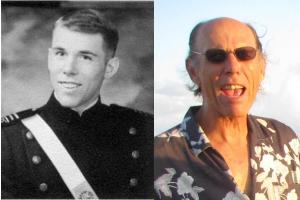 Paul
hails from Flossmoor, Illinois, a small town south of Chicago. He was
first in CS-21 "Black Jack" Squadron and then in CS-11 "Rebeleven"
for our last two years. At the Academy, Paul excelled academically and
as a result was always on the Dean's List. Paul
hails from Flossmoor, Illinois, a small town south of Chicago. He was
first in CS-21 "Black Jack" Squadron and then in CS-11 "Rebeleven"
for our last two years. At the Academy, Paul excelled academically and
as a result was always on the Dean's List.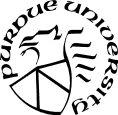 The day after graduation, Paul and Patricia got married in the Cadet Chapel
and then it was back to the Midwest where Paul attended Purdue University
in Indiana, earning a MS in Astronautical and Aeronautical Engineering
in 1969.
The day after graduation, Paul and Patricia got married in the Cadet Chapel
and then it was back to the Midwest where Paul attended Purdue University
in Indiana, earning a MS in Astronautical and Aeronautical Engineering
in 1969. Following
graduate school it was off to Undergraduate Pilot Training at Vance AFB
for a year and then to Japan where Paul was a pilot with the 56th Weather
Reconnaissance Squadron flying the WC-135 out of Yokota AB. His additional
duties included serving as a maintenance supervisor and flight operations
member. During his tour at Yokota, Paul's drive to learn continued and
led to his enrollment in the University of Hawaii, Tokyo Extension doing
graduate study toward an MBA. Following
graduate school it was off to Undergraduate Pilot Training at Vance AFB
for a year and then to Japan where Paul was a pilot with the 56th Weather
Reconnaissance Squadron flying the WC-135 out of Yokota AB. His additional
duties included serving as a maintenance supervisor and flight operations
member. During his tour at Yokota, Paul's drive to learn continued and
led to his enrollment in the University of Hawaii, Tokyo Extension doing
graduate study toward an MBA. In 1972,
Paul’s assignment in Japan was cut short for a South East Asia tour.
Paul became a member of the 18th Special Operations Squadron stationed
at Nakhon Phenom AB, Thailand and DaNang AB, South Vietnam. He flew AC-119K's
for combat missions and ferried C-119G's to the Philippines at the end
of the war. In 1972,
Paul’s assignment in Japan was cut short for a South East Asia tour.
Paul became a member of the 18th Special Operations Squadron stationed
at Nakhon Phenom AB, Thailand and DaNang AB, South Vietnam. He flew AC-119K's
for combat missions and ferried C-119G's to the Philippines at the end
of the war.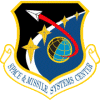 Paul
returned to CONUS to Los Angeles AFS, and was assigned to the Space and
Missile Systems Organization as an Aerospace Contract Manager. During
his short stay, he organized teams using Air Force and government service
personnel to evaluate contractor proposals and manage accepted contracts. Paul
returned to CONUS to Los Angeles AFS, and was assigned to the Space and
Missile Systems Organization as an Aerospace Contract Manager. During
his short stay, he organized teams using Air Force and government service
personnel to evaluate contractor proposals and manage accepted contracts.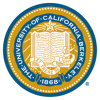 In
1973, Paul completed his military service commitment (via Palace Chase
flying for the California ANG) and started a new path, first by attending
the University of California, where he earned a Master of Architecture
in 1976. While aerospace was his primary chosen career path, suddenly
Paul was thrust into the business world. Staying in the Bay Area of California,
Paul formed his own company, Paul H. Lutton and Associates, where he established
and managed a multifunction organization whose business included architectural
services, construction, and real estate development. His success in development
afforded him the opportunity to retire at 34 and focus on energy conservation
R&D. The interest rate explosion in the early 80’s destroyed
his little empire, and he was forced to start all over from the ground
up. In
1973, Paul completed his military service commitment (via Palace Chase
flying for the California ANG) and started a new path, first by attending
the University of California, where he earned a Master of Architecture
in 1976. While aerospace was his primary chosen career path, suddenly
Paul was thrust into the business world. Staying in the Bay Area of California,
Paul formed his own company, Paul H. Lutton and Associates, where he established
and managed a multifunction organization whose business included architectural
services, construction, and real estate development. His success in development
afforded him the opportunity to retire at 34 and focus on energy conservation
R&D. The interest rate explosion in the early 80’s destroyed
his little empire, and he was forced to start all over from the ground
up.Paul moved back to the Chicago area, and in 1982, staying close to the architecture discipline, entered the CADD (computer aided design & drafting) market with Sigma Design, Inc. (an Englewood CO company). He later founded CADD Midwest Corp., a company of multiple functions, to develop software and to provide services and management consultation for manufacturing, architectural, and facility management applications. Beginning in 1995, Paul joined BAB Systems, Inc. As the Director of Facilities, his department selected sites, designed stores, did the contracting and construction, and maintaining the finished facilities for corporately owned franchises, such as Big Apple Bagels, My Favorite Muffins, and Brewster's Coffee nationwide. Over the course of 10 years as an employee or consultant, he designed nearly 400 stores all over the States and in several other countries. From 1999 to 2005 Paul was President of North Shore Design/Build, Corp., Northfield, IL a firm that designed and built residential remodel construction projects. After 39 years of marriage Paul and Patricia went their separate ways - Patricia stayed in Chicago, and Paul moved to Vieques, Puerto Rico. They have two wonderful boys and four grandkids living in the East Bay of San Francisco. "At the 35th reunion, we were in a conference room with the 21st Squadron and cadets asked about our individual careers. When it was my turn, I explained that I was intending to move to Vieques and pursue real estate development. After the discussion, Charlie Holland came up to me and said that I might wish to reconsider because the US Government was in the process of shutting down Roosevelt Roads Naval Base, which was the life blood of the area. He was right that the economy of the region tanked – and is still a mess. Vieques holds its own with tourism, but struggles. Puerto Rico is a disaster, but I’m hoping to help build a future for our tiny island." 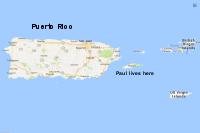 In 2005 Paul became a registered architect in Puerto Rico and formed Vieques
Verde LLC, an architectural and general contracting firm performing design/build
services of sustainable homes on the island of Vieques, which is off the
south east coast of Puerto Rico.
In 2005 Paul became a registered architect in Puerto Rico and formed Vieques
Verde LLC, an architectural and general contracting firm performing design/build
services of sustainable homes on the island of Vieques, which is off the
south east coast of Puerto Rico.Recently retiring in 2016, Paul founded the Vieques-Libre Corp, a nonprofit corporation for the purpose of preparing Vieques for a self-determined, sustainable future. "My real work is trying to help the island survive and prosper. The kids here haven't got a chance." Please view the video below to learn more about the island of Vieques and what Paul has been doing. "I am extremely
lucky and have a wonderful life that has gone in directions I never
could have planned or forecasted. I was devastated to leave my boyhood
dream of an aerospace career, but I could not get on the track that
I wanted out of pilot training, so I bailed out to pursue the great
unknown. I'm a bit of an outlier and don't take orders well. My favorite
word is ‘Why?’ I have no regrets - I just need to live another
life or two. One of the most exciting events of my life was at Cape
Canaveral watching (and feeling) Dick Covey launch into space as the
shuttle returned to service after Challenger.
Paul
- We're all proud of you! |
| Paul H. Lutton's Post Hurricane Report from Vieques Island,
Puerto Rico - October 17, 2017
I just discovered my old DSL service is actually running,
thus here I am on Facebook. I also found out that my regular email and
website are not! So, I am using the email address of one of my other
sites until I can straighten out the problem with my normal system.
You can reach me at: discussion@vieques-libre.com Paul H. Lutton's Post Hurricane Report from Vieques Island, Puerto Rico - October 20, 2017 The crisis in Puerto Rico is far from over, and there
will be more discoveries and disclosures as time passes, however, we
know some things already. Arguably, the two most important functions
of our government – security and communications - were almost nonexistent
and the PR owned and operated businesses of power and transportation
collapsed. The results reflect dereliction of duty: |